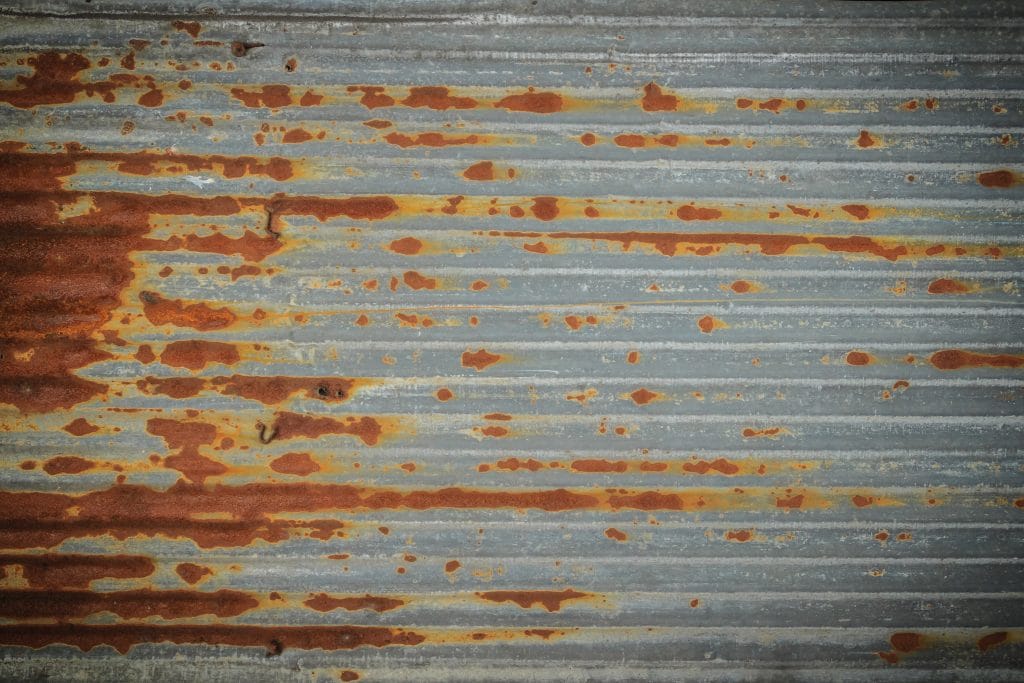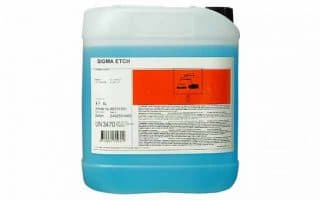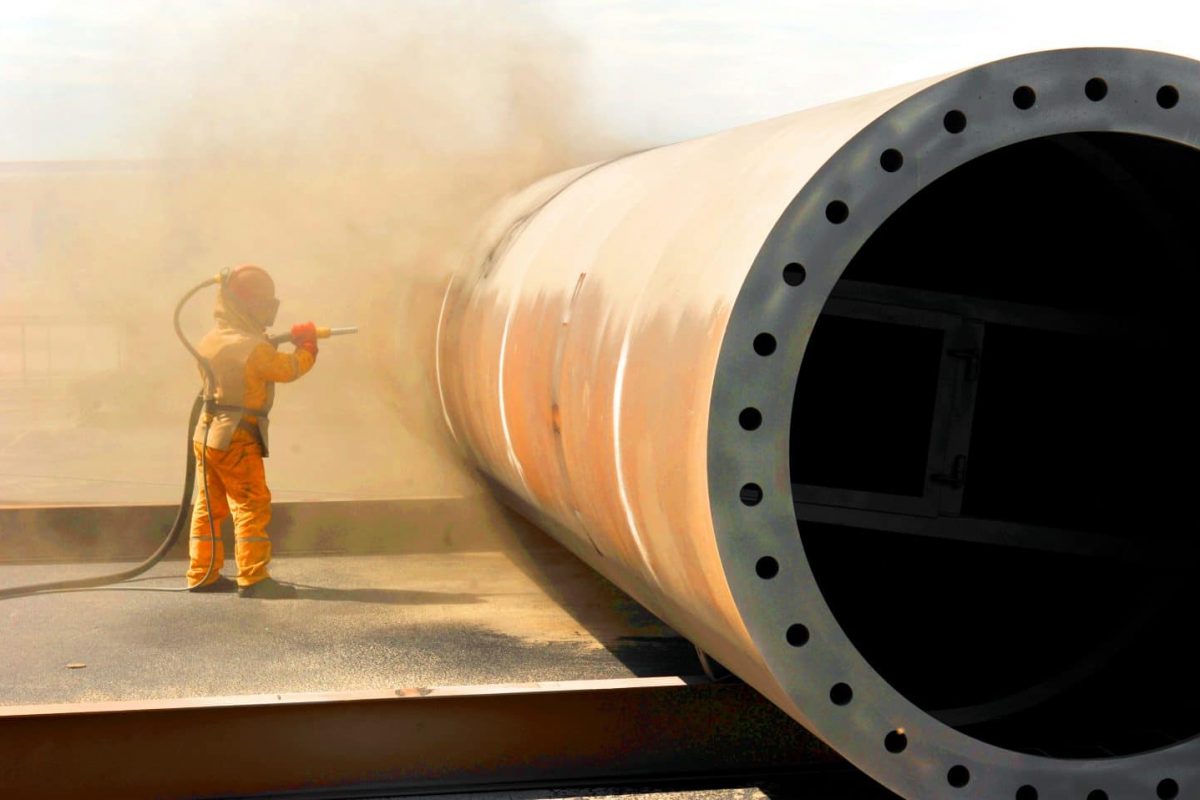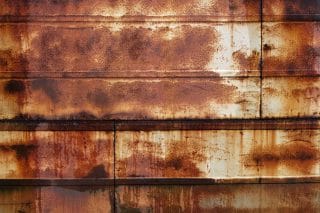The most important stage of painting is the preparation. Carry out correct preparation before painting commences. Otherwise there is a likelihood that the paint coating will fail prematurely. You can significantly reduce the life and performance of any coating by the degree of previous preparation. Below, we will explore the correct preparation of steel via sandblasting and other blasting methods.
It has been proven that correct surface preparation is the most important factor affecting the total success of a coating. The presence of even small amounts of surface contaminants such as grease, oil, oxides etc. can physically impair and reduce coating adhesion to the substrate.
Chemical contaminants such as chlorides and sulphates are not readily visible. However they attract moisture through coating systems resulting in premature failure. In summary, it cannot be over-emphasised the importance of a chemically clean substrate to provide the best possible surface for application of a coating.
Below we are focusing on the surface preparation of metallic surfaces for corrosion protective coatings.
Understanding The Manufacture of Steel
The adhesion of coating materials such as zinc by hot dip galvanising is particularly good due to the metallurgical alloying with the steel surface. Upon dipping, the molten zinc reacts with the steel to form a series of iron / zinc alloy layers of varying composition to form an intimate bond with the substrate.
Metal coatings applied by thermal spraying require a much coarser profile to the surface to maximise the bond of the coating which are principally achieved by mechanical keying.
Organic paint coatings adhere to the surface mainly by polar adhesion which is aided by mechanical adhesion. This becomes especially important for thicker coatings.
For all types of paint coatings, the surface condition of the substrate is critical in terms of their performance and durability.
Structural steelwork that has been hot rolled leaves the last rolling pass at a temperature of 1000°C. As the steel cools, the surface of the steel reacts with oxygen in the atmosphere to produce what is known as mill scale. Mill scale is a complex oxide which appears as a blue-grey tenacious scale completely covering the surface of the steel. Mill scale is unstable and after a period of time. Water in the atmosphere penetrates fissures in the scale and rusting can occur. This corrosion process soon detaches the mill scale and produces an unsound surface. This will require a degree of rust remover preparation before painting.

Understanding Rusting
The amount of rusting that forms will depend upon 2 main factors. Firstly, the length of time that the steel has been left without protection. Secondly it takes into account the amount of moisture in the air (relative humidity). Descriptions of the four categories of ‘rust grades’ for new steelwork are in ISO 8501-1: 1988 (BS 7079 Part A1, 1989) as follows:
- A – Steel surface largely covered with adhering mill scale, but little if any rust.
- B – Steel surface which has begun to rust and from which mill scale has begun to flake.
- C – Steel surface on which the mill scale has rusted away or from which it can be scraped, but with slight pitting under normal vision.
- D – Steel surface on which the mill scale has rusted away and on which general pitting is visible under normal vision.
Steel Preparation before Painting
A very wide range of non-metallic (metal slags, aluminium oxide etc) and metallic (steel shot or grit etc) abrasives are available. Each method will provide a different profile and some are faster as a rust remover than others.
The size of the abrasive is also an important factor in affecting the rate and efficiency of cleaning. In general terms, fine grades are efficient in cleaning relatively new steelwork. However you may require coarse grades for corrosion heavy surfaces.
A rust remover on pitted steel with the use of a fine grade abrasive is often more effective. This is due to it being able to penetrate the pitted areas in the metal easier than large particles. Depending upon the condition of the steel surface, you may require a mixture of grades to initially to break down, remove mill scale and clean in pitted areas.
Sa1 – Light sandblasting cleaning.
Sa2 – Thorough sandblasting cleaning.
Sa2 1/ 2 – Very thorough sandblast cleaning.
Sa3 – Sandblasting cleaning to visually clean steel.
Soda Blasting
Soda blasting however, is a more delicate process you can use for the restoration. As a non destructive cleaning method, you can use soda blasting for masonry restoration. It is also suitable for paint and varnish stripping, and boat hull cleaning. You can even use it for dental tooth cleaning! Soda blasting was the process used during the conservation and restoration of the Statue of Liberty during the 1980’s and if you are a regular viewer of Car S.O.S you would have heard of this method being used on classic cars.
Hand and Power Tool Cleaning (St Grades)
Surface cleaning by hand tools such as scrapers or with a wire brush is relatively ineffective in removing mill scale or as a rust remover. Power tools offer a slight improvement over manual methods and these methods can be approximately 30% to 50% effective. However, you do not not usually utilise these for new steel work fabrications.
Abrasive Blast Cleaning / Sandblasting (Sa Grades)
Some times referred to as sandblasting or shot blasting, the use of an abrasive medium offers the best method of cleaning mill-scaled and rusted surfaces. This method involves mechanical cleaning by the continuous impact of abrasive particles at high velocities on to the steel surface. This is either in a jet stream of air or water as the most common method.
The surface treatment specification therefore should describe the surface roughness requirement. This usually is an indication of the average profile achieved by the blast cleaning process.
Following the preparation of the surface to an acceptable standard of cleanliness and profile, it is important that the steelwork does not deteriorate. Re-rusting can occur very quickly (known as gingering) in a damp humid environment. Unless the steel is stored in a dry condition coating of the substrate should be carried out as soon as possible. Any re-rusting of the surface should be considered as a contaminant and be removed by re-blasting.
The need to carry out surface preparation of a galvanized surface prior to painting is more important than that required for steel substrates. Failure to prepare a galvanized surface correctly will lead to a reduction in life of both the paint and underlying galvanizing.
The most important factor is the complete removal of any oil, grease or other foreign matter from the surface. This can be achieved by the use of suitable degreasing agent such as PPG Prep 88. Apply the following treatments once the surface is chemically clean.
Mordant Solution (‘T’ Wash)
Mordant solution has traditionally bean used to prepare new unweathered galvanised steel for some considerable time with varying degrees of success. This is still generally considered to be the best pre-treatment method available. The solution is an acidified solution in methylated spirits containing copper carbonate which reacts with the zinc surface.
 Degreased surfaces are treated with ‘T-Wash’, which is best brush applied to ensure that all of the surface is evenly coated. The ‘T-Wash’ reacts with the galvanizing to form a darkened surface suitable for a paint coating to be applied to.
Degreased surfaces are treated with ‘T-Wash’, which is best brush applied to ensure that all of the surface is evenly coated. The ‘T-Wash’ reacts with the galvanizing to form a darkened surface suitable for a paint coating to be applied to.
The reaction is a visual one and a successful application of T-Wash produces a black surface colouration. Where no such colour is observed, further application(s) can be made to ensure that a total reaction takes place. Care should be taken to avoid ponding or puddling of the ‘T-Wash’. Remove anny excess, by washing with water.
Not all manufacturers recommend the washing down of surfaces after application. Please consult the manufacturers data sheets for their recommendation.
Washing down with water will mean the surface will require drying before applying the paint coating. Not washing down can result in some degree of surface contamination as a residue. It is generally recommended by most manufactures that washing with clean water and drying the surface should be carried out.
Unless the surface of new galvanised metal has been cleaned by the use of sandblasting (sweep) blast, T-wash must be used as is recommended specified as part of a ‘duplex’ (metal and paint) coating.
Mordant Solutions can be found on our web shop here.
Weathering
The weathering process on galvanized surface is best after approximately twelve months exposure. Preparation of the surface is a fairly simple one. Prepare the surface using either abrasive pads or stiff bristle brushes. This is to remove all loose adherent materials. However ensure not to restore the bright zinc surface. Follow this then with a hot water detergent was. Follow this in turn by a rinse with fresh clean water. Before applying a paint coating ensure the substrate is thoroughly dry.
In marine environments where chloride levels are high, weathering is not the preferred option. Carry out preparation and painting either before or shortly after exposure.
Etch Primers
The major disadvantage of etch primers is the absence of any visible colour change after application as is the case with T-Wash. Therefore, there can never be complete confidence that all surfaces have fully reacted to the primer. Major differences arise in the surface condition if you use single-pack or two-pack materials. 2 pack materials will provide a better substrate in the future. Single-pack primers have lower levels of reactive materials in their formulation. Whereas the two-pack products carry higher levels. These products activate as a result of the necessary mixing action.
Etch Primers can be found on our web shop here.
Sweep Blasting (Light Sandblasting)
This is the use of low pressure (< 275 kPa / 40 psi) blast-cleaning using a fine grade non-metallic abrasive. It is a process which can be very effective, but only when undertaken with a high degree of expertise. You can achieve best results on flat surfaces. If you use this method on more complex shapes, it can lead to areas suffering from of under-preparation or over-preparation.
If excessive light sandblasting is carried out there is a possibility that the zinc coating is removed. Then the exposure of the bare steel happen. This often occurs on edges. You can also affect the coatings integrity through excessive blasting on thinner steel sections. This over blasting can produce a poor surface for the duplex paint coating to adhere to. This results in a reduce life to first maintenance of the coating.
The light sandblasting cleaning operation often produces large quantities of dust and debris which must be removed from the surface by either brush or vacuum before painting is carried out.
Preparation of Previously Coated Surfaces For Maintenance Painting
The length of time the coating will last is dependant on location corrosivity. These areas will be under the C1 to C5 High categorisation.
| Corrosivity Category | Low-Carbon Steel Thickness Loss (μm)a | Exterior | Interior |
| C1 Very Low |
≤ 1.3 | – | Heated buildings with clean atmospheres, e.g. offices, shops, schools, hotels |
| C2 Low | > 1.3 to 25 | Atmospheres with low level of pollution: mostly rural areas | Unheated buildings where condensation can occur, e.g. depots, sports halls |
| C3 Medium | > 25 to 50 | Urban and industrial atmospheres, moderate sulphur dioxide pollution; coastal area with low salinity | Production rooms with high humidity and some air pollution, e.g. food-processing plants, laundries, breweries, dairies |
| C4 High | > 50 to 80 | Industrial areas and coastal areas with moderate salinity | Chemical plants, swimming pools, coastal ship and boatyards |
| C5 Very High | > 80 to 200 | Industrial areas with high humidity and aggressive atmosphere and coastal areas with high salinity | Buildings or areas with almost permanent condensation and high pollution |
| CX Extreme |
> 200 to 700 | Offshore areas with high salinity and industrial areas with extreme humidity and aggressive atmosphere and sub-tropical and tropical atmospheres | Industrial areas with extreme humidity and aggressive atmosphere |
Table from https://www.steelconstruction.info/Standard_corrosion_protection_systems_for_buildings
Which Category of Cleanliness Is Right For My Project?
Inspect steel structures periodically to determine if they require maintenance. This ensures to maintain the protection offered by the coating. Generally, the cosmetic finish can often suffer from UV damage. This causes the coating to loose its colour or sheen level.
In order to prepare a strategy for maintenance painting, it is important to undertake a survey. This is to determine whether the substrate requires part or full re-painting. Where the coating is firmly adhered to the substrate with no indication of breakdown, consider them as a suitable base for the maintenance coats.
Thoroughly wash the surface of the existing paint to remove contaminants. It may then be necessary to abrade the surface lightly. This is especially true of hard coatings. Such hard coatings include epoxies or PU’s. This is to enable good adhesion.
Where the breakdown is localised and the majority of the protective coating is intact and in a sound condition, then the small defective areas can be prepared back to the substrate for localised repainting. Ideally, the affected areas should be prepared to a standard suitable for the maintenance paint. For example, localised sandblasting. Where sand blasting is impractical, you can use manual and mechanical methods.
Standards For Surface Cleanliness
The desired standards of surface cleanliness for previously painted (existing) steelwork are defined in ISO 8501-2: 1994 (E), ‘Preparation of Steel Substrates before Application of Paints and Related Products – Visual Assessment of Surface Cleanliness – Preparation Grades of Previously Coated Steel Substrates after Localised Removal of Previous Coatings’. The levels of visual cleanliness relate to the common methods that we use prior to painting. This standard is based upon experience that complete removal of all previous paint coatings is not always necessary and that localised treatment is sufficient.
In such situations, we assume that the remaining intact coating is providing a sound base for the additional coating application. This is following a light abrasion to remove and lose edges. And finally these edges are feathered in for application of the new paint.
Do you have any enquiries in regards your project and cleanliness requirements for sandblasting? Contact Promain‘s technical team on 01462 421333.





